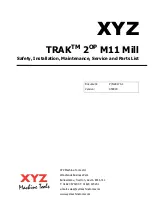
Viper SC+™ IP Router for Licensed Spectrum PN 001-5008-000 Rev. C
| Page 156
VIPER CONFIGURATION (RADIO AND CONTROLLER BOARD FOR BASE STATION)
1.
Ensure the latest Viper firmware is installed.
2.
Ensure the Viper is configured correctly for each tower group.
a.
Frequencies
b.
Power
c.
Bandwidth and over-the-air data rate
d.
Wing Commander parameters set
e.
Serial port data format correct
f.
Security has the same phrase in all Vipers
3.
Ensure unique IP addresses and record for each location.
4.
Ensure the base station has been configured correctly and can communicate to the internal Vipers.
a.
Ensure the default gateway has been set in the base station controller.
b.
Ensure it is in auto mode (if redundant base).
c.
Ensure two remote Vipers’ IPs have been configured (if redundant base).
RF CONNECTIVITY AND PROTOCOL TESTING
1.
Check and record forward and reverse power in Viper.
a.
Key the Viper via the web page RF test and check forward and reverse power readings under RF status.
b.
Correct any power issues if required. If the reverse power is greater than 1.2 watts, verify with a watt meter.
2.
Ping the master Viper (from remote).
Use a ping utility (CalAmp recommends Integra-TR ping utility; use random data 128 bytes, 200 pings). Ping success
rate should be 97% or greater.
3.
Check and record RSSI and SNR values.
a.
At the master, record all remotes’ RSSI and SNR values.
b.
At the remote, record the master’s RSSI and SNR values.
4.
Ensure the SCADA host control center can send commands and poll to end devices.
Verify with the SCADA host control center that commands and responses are sent to and received from remote
locations.
















































